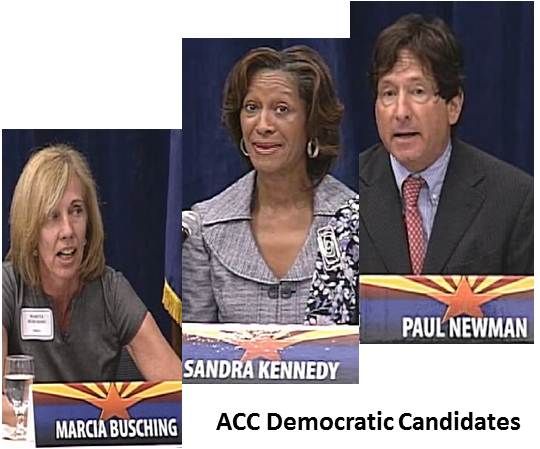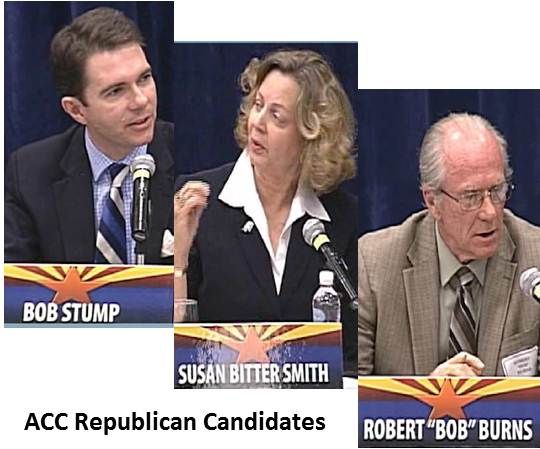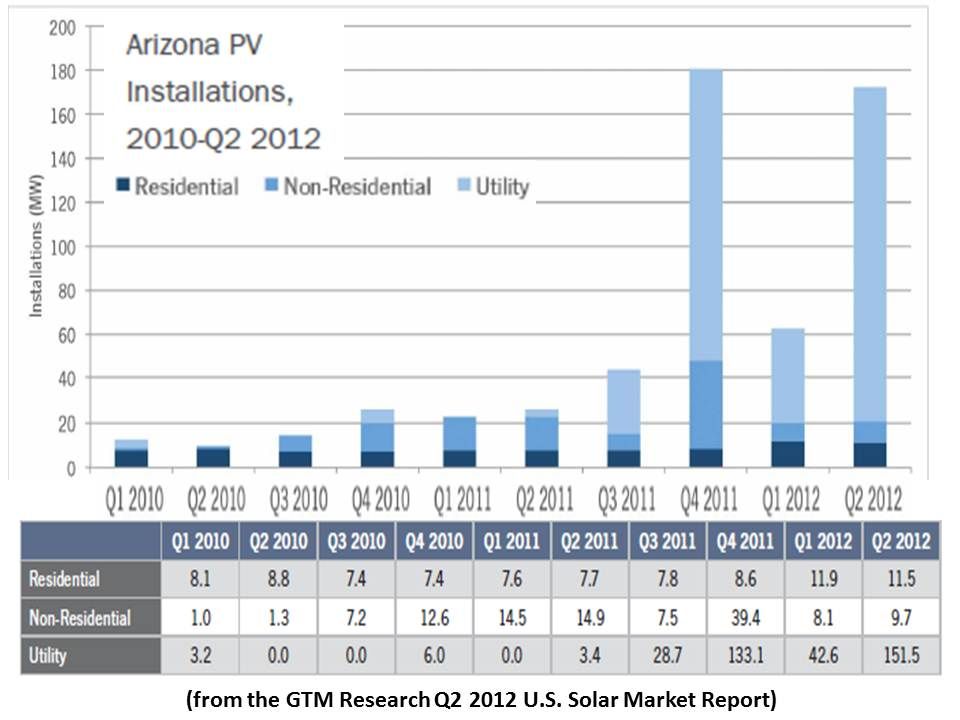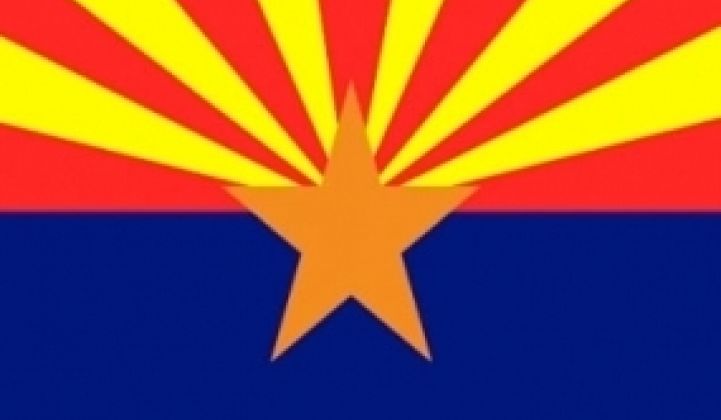Arizona’s solar growth skyrocketed following passage of an aggressive Renewable Energy Standard (RES) in 2006 with a carve-out specifying that 30 percent of the renewables be solar.
But Arizona’s solar resource is so enormous the standard is being rapidly met, and it appears that only those who don’t understand or don’t want to see the state’s solar sector keep growing oppose upping the 15 percent by 2025 requirement.
The decision to expand it must be made by the Arizona Corporate Commission (ACC), an independently elected body constitutionally empowered to regulate public utilities and facilitate business.
Democrats Paul Newman, Sandra Kennedy and Marcia Busching have for months called themselves the Solar Team because they back expansion of the state’s mandate for solar and other renewables. Newman and Kennedy are up for re-election and Busching is challenging a Republican incumbent.

They call Republicans Bob Stump, Robert Burns and Susan Bitter Smith the Trash Burner Team because of their support for a controversial measure recently passed that undermined the state’s solar mandate. Stump is being challenged by Busching, and Burns and Bitter Smith are challenging the Democratic incumbents.

The Trash Burner decision by the current, Republican-dominated Commission allowed Mohave Electric to substitute an 11-megawatt trash-to-gas power plant for part of its RES obligation. This was granted despite the fact that the original RES specifically ruled trash-to-gas as too polluting an electricity source to be substituted for renewables.
Mohave Electric CEO Tyler Carlson argued the trash-to-gas power plant could reduce costs to ratepayers by saving some of what the utility spends on solar. But “the trash-burner costs almost twice as much to build” and “twenty times more to run,” Democratic Commissioner Paul Newman told GTM. “What are they thinking, and whose interests are they serving?"
The election has been brutal. The Trash Burner Team was forced into a $29,000 settlement to avoid a misuse of public funds charge arising from money restricted to the ACC election that was spent on mailings tying the Solar Team to President Obama.
In a more recent mailing, the Republicans attempted to steal the Democrats’ edge by calling themselves a solar team.
The 15 percent RES came out of the ACC’s decision that growing solar would benefit the state’s economy, ratepayers and taxpayers. Arizona’s citizens and solar builders responded to it enthusiastically and the ACC made sure APS and TEP, the major utilities it oversees and two of the state’s three biggest, provided rebates commensurate with the mandate’s intent. Rooftop solar exploded.
The RES solar requirement will, by the end of 2012, have nominally been met, though it won’t be operationally met until the 280-megawatt Solana solar power tower project goes into service in 2013-14.
With Solana under development and its PPA secured, and without a bigger mandate, the appeal of rooftop solar will remain, but most industry watchers expect demand to slow as the state’s utilities pull back rebate programs instituted to achieve the required amount of solar.

Indicative of the commissioners’ differences was a recent vote on a $19 million balance sheet factor that became available in the 2012 APS budget. Newman proposed adding it to the solar rebate program. Stump proposed refunding it to ratepayers. The Republican majority kept the money from going to solar.
Without RES-driven demand, Arizona utilities have been able to convince the ACC’s Republican majority to lower rebates from $3.00 per watt to $0.20 per watt.
Without a bigger RES solar requirement, said Arizona Sierra Club Director Sandy Bahr, “we are likely to lag.” APS, she added, “is looking at meeting its RES requirement long before 2025. It is likely to be ten years early.”
In a recent campaign debate, the candidates were each asked about expanding the RES.
Stump said the mandate is “just right” and, if expanded, “the cost to consumers would just be too high.”
“I find myself trying to defend the standard,” Kennedy said, from people who “would take away funding.” But, she said, she would like to stop just defending it and “increase the standard.”
Burns said he thought the standard should be left in place to “find out what’s best” for solar in the state.
“It was a good starting point,” Newman said, “but 15 percent is not enough to keep us strong. Promoting solar energy in Arizona is a no-brainer. Other states in the Southwest have higher solar requirements.”
Bitter Smith echoed Stump, agreeing the current RES “is just right.”
“I think it’s too low,” Busching said. “Ariziona was second in the U.S. in solar installations in 2011 but was it was twenty-fourth in renewable energy. Being the sunniest state, Arizona has an opportunity to be a leader.”
The Burns and Bitter Smith contention that too much solar will negatively impact the state’s economy also shows the so-called Trash Burner Team's misunderstanding of solar, noted Commissioner Newman’s campaign. It pointed out that Phoenix construction jobs dropped 14.4 percent in 2010 while Arizona moved from eighth to third place nationally in providing solar employment the very next year, going from approximately 3,800 to 4,786 jobs.
Another example of where the sides stand was a recent incident at the Commission. Newman’s staff wanted to use the Commission’s in-house video system and online broadcast capability to do public outreach educational seminars on the energy issues facing the commission. Republicans blocked the plan.
Each of the candidates was contacted for a statement about the AZ RES. None responded.



